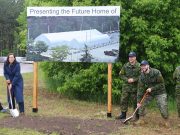I’d like to feel more at ease when we return to work as usual. Now that I’m at home and have some distance between myself and a co-worker I’m in conflict with, how do you recommend I approach him/her?
Thinking through a situation while in a cooler, more detached state is often a good idea!
If you’re thinking of engaging the other person in a dialogue before going back to the office, be aware that there are risks inherent in virtual connection/communication.
Body language, tone, and other vital components of effective communication may be harder to discern or missing entirely, depending on the means you use. Text and email are often the hardest to navigate a conflict because of this; avoid them if you can and use the phone or video conference instead.
If you’d rather not wait and want to use this opportunity to invite the other person into a collaborative problem-solving dialogue, remember to use “I” statements. (Sentences that begin with or contain the word “you” can inadvertently escalate the conflict because they can sometimes sound like blame, accusation, or exaggeration to the other party.) The DESC model is often a good format for framing the conversation; contact us to learn more about this and other tools and strategies for more effective problem-solving, and/or take advantage of the many online courses available to government employees and CAF members noted above).
What’s the best way to connect with CCMS under the circumstances?
- Email to ++CCMS Borden; or
- General Intake Line : 705-424-1200, extension 2214
Sentir à l’aise à mon retour au travail
Je voudrais me sentir pleinement à l’aise à mon retour au travail. Vu que je suis à la maison maintenant et qu’il existe une distance entre moi et un(e) collègue avec qui je suis en conflit, quelles seraient vos recommandations comme démarche pour aborder le ou la collègue?
Il est bon de faire une réflexion lorsqu’on est dans un état où on se sent détaché de la situation.
Si vous songez à engager l’autre personne dans un dialogue avant votre retour au travail, sachez qu’il existe des risques inhérents à la connexion / communication virtuelle.
Le langage corporel, le ton et d’autres éléments vitaux d’une communication efficace peuvent être plus difficiles à discerner ou manquants carrément, dépendamment des moyens de communication utilisés. Pour ces raisons, le texto et le courriel sont fréquemment des méthodes qui rendent plus difficile la gestion de conflit; évitez d’utiliser ces méthodes et privilégiez le téléphone ou la vidéoconférence si vous le pouvez.
Si vous préférez ne pas attendre et souhaitez profiter de l’occasion pour inviter l’autre personne au dialogue collaboratif de résolution de problèmes, rappelez-vous d’utiliser le «Je». (Les phrases commençant par ou qui contiennent le mot «Tu» peux aggraver une situation et pourrait être reçu comme un blâme, une accusation ou une exagération.) Le modèle DESC est un bon outil pour encadrer la conversation; contactez-nous pour en savoir plus à ce sujet et d’autres outils et stratégies pour une résolution de problèmes, et/ou profiter des nombreux cours en ligne offerts aux employés de la Fonction publique du Canada et aux membres des FAC mentionnés ci-haut.
Quelle est la meilleure façon de communiquer avec les SGCP dans les circonstances actuelles?
- Par courriel à l’adresse ++CCMS Borden ; ou
- Par téléphone au 705-424-1200, poste 2214











